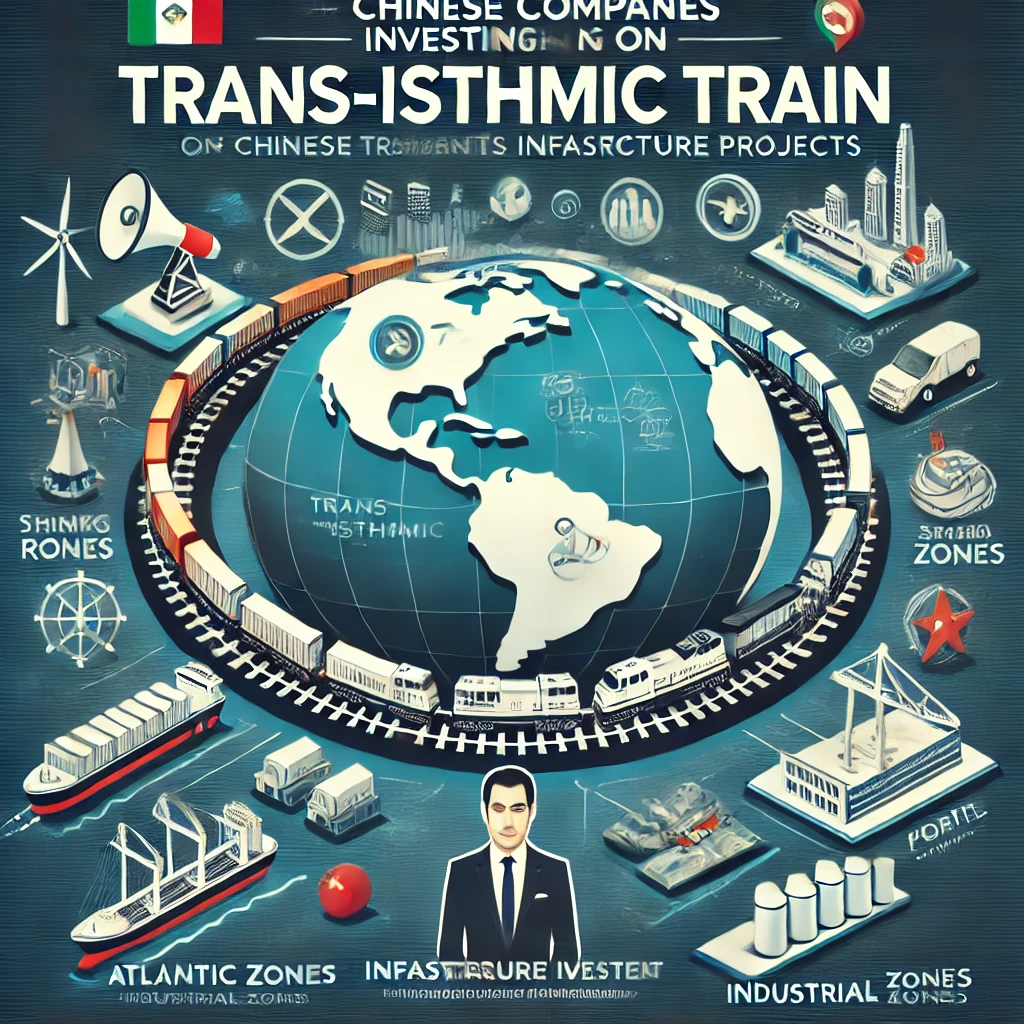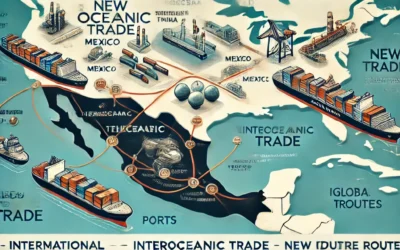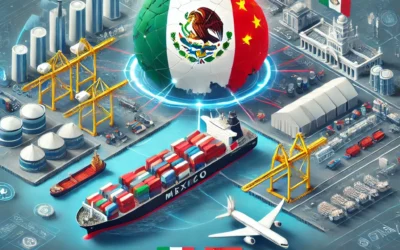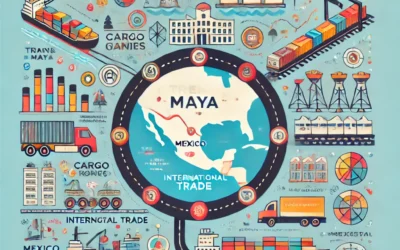Mexico’s infrastructure is undergoing a major transformation, fueled by ambitious projects like the Trans-Isthmic Train, an initiative that seeks to connect the Atlantic and Pacific Oceans through the southern region of the country. This project, along with others, is a central part of the Mexican government’s strategy to boost economic development, modernize transportation, and attract foreign investment. For Chinese companies, this presents a unique opportunity to establish a strong presence in Latin America, leveraging Mexico’s strategic location and the favorable conditions promoted by the new government.
The Trans-Isthmic Train: A Strategic Project
- Connecting the Atlantic and Pacific Oceans: The Trans-Isthmic Train aims to create a faster, more efficient trade route by linking the port of Coatzacoalcos on the Gulf of Mexico with the port of Salina Cruz on the Pacific Ocean. Spanning approximately 300 kilometers, this corridor is positioned as a competitive alternative to the Panama Canal, offering reduced transit times and costs for global trade.
Example: Reduction in Costs and Time
For Chinese companies exporting goods to the Americas or Europe, the Trans-Isthmic Train provides a streamlined logistics solution that could reduce shipping times and operational expenses. With a focus on enhancing Mexico’s role in international trade, the corridor will enable Chinese companies to move goods between the Pacific and Atlantic faster and more cost-effectively.
- Industrial and Logistic Hubs Along the Corridor: The project also includes the development of industrial and logistic zones along the route. These zones are designed to attract manufacturing, warehousing, and distribution centers, offering tax incentives and state-of-the-art infrastructure. Chinese companies looking to expand their manufacturing or distribution capacity in Latin America can capitalize on these opportunities.
Example: Special Economic Zones (SEZs)
The Mexican government is establishing Special Economic Zones (SEZs) along the Trans-Isthmic route, offering tax incentives, skilled labor, and strategic logistical advantages. Chinese companies can benefit from these zones, gaining easier access to Latin American and North American markets.
Opportunities for Chinese Companies
- Infrastructure and Logistics Investments: Chinese companies, with their vast experience in large-scale infrastructure and logistics projects, are well-positioned to play a key role in the development of ports, railways, and logistics centers along the corridor. The opportunity to participate as contractors or investors in the construction and modernization of this infrastructure is significant.
Example: Participation in Infrastructure Projects
Companies like China Harbour Engineering Company (CHEC) have successfully undertaken international infrastructure projects. Their expertise can be critical in helping to develop the Trans-Isthmic Train, contributing to the construction of key facilities and infrastructure.
- Expansion of Trade Routes and Exports: The Trans-Isthmic Train also opens up new possibilities for Chinese companies to establish a logistical hub in Mexico, allowing them to distribute products across North and South America more efficiently. By leveraging the corridor, Chinese companies can access new markets faster, expanding their reach in the Americas.
Example: Exporting Consumer Goods and Electronics
Mexico is a major market for Chinese-manufactured electronics and consumer goods. By utilizing the Trans-Isthmic Train, Chinese companies can streamline the distribution of these products, ensuring faster delivery and greater market penetration.

Benefits of the Trans-Isthmic Train for Chinese Companies
- Increased Global Competitiveness: By reducing transportation costs and improving transit times, the Trans-Isthmic Train allows Chinese companies to increase their competitiveness in global trade. This will enable Chinese businesses to expand their market presence across Latin America and North America.
- Tax Incentives and Free Trade Zones: Companies that establish operations in the industrial zones along the corridor will benefit from significant tax incentives, including reductions in import and export taxes, and access to cutting-edge infrastructure.
- Improved Connectivity with Latin America and North America: The Trans-Isthmic Train enhances connectivity between North and South America, which is especially important for Chinese companies looking to expand their distribution networks across the continent.
How Gladium Pacific Can Help
- Infrastructure and Logistics Consulting: Gladium Pacific provides strategic consulting services to Chinese companies interested in leveraging the opportunities of the Trans-Isthmic Train. We assist in identifying key infrastructure and logistics projects and provide support in negotiating with the Mexican government.
- Supply Chain Optimization: We help Chinese companies maximize supply chain efficiency by utilizing the new routes offered by the Trans-Isthmic Train. This includes identifying strategic distribution points and reducing operational costs.
- Regulatory Compliance and Project Management: Gladium Pacific offers advisory services to ensure that Chinese companies comply with Mexican regulations and manage the risks associated with infrastructure projects in the Trans-Isthmic Corridor, ensuring smooth and successful investments.
Key Information on Mexico’s Trade Growth
- Expansion of Foreign Trade: Mexico has experienced a 25% increase in foreign trade volume over the past year, driven by improved logistics and infrastructure projects like the Trans-Isthmic Train.
- Infrastructure Investment: The Mexican government expects the Trans-Isthmic Corridor to attract more than $5 billion in infrastructure investment over the next five years.
Key Statistics
- Increase in Transport Capacity: The Trans-Isthmic Train is designed to handle up to 10 million tons of cargo annually, making it one of the most important logistical corridors in Latin America.
- Growth in Trade Between China and Latin America: Over the past five years, trade between China and Latin America has grown by more than 30%, with Chinese exports of manufactured goods and electronics leading the way.
Conclusion
The Trans-Isthmic Corridor of the Isthmus of Tehuantepec offers Chinese companies a unique opportunity to expand their commercial operations in Latin America. With the support of the Mexican government and available tax incentives, Chinese businesses can take advantage of this new infrastructure to reduce costs, enhance competitiveness, and access new markets. Gladium Pacific is here to help Chinese companies maximize these opportunities and ensure success in the Trans-Isthmic Corridor.









